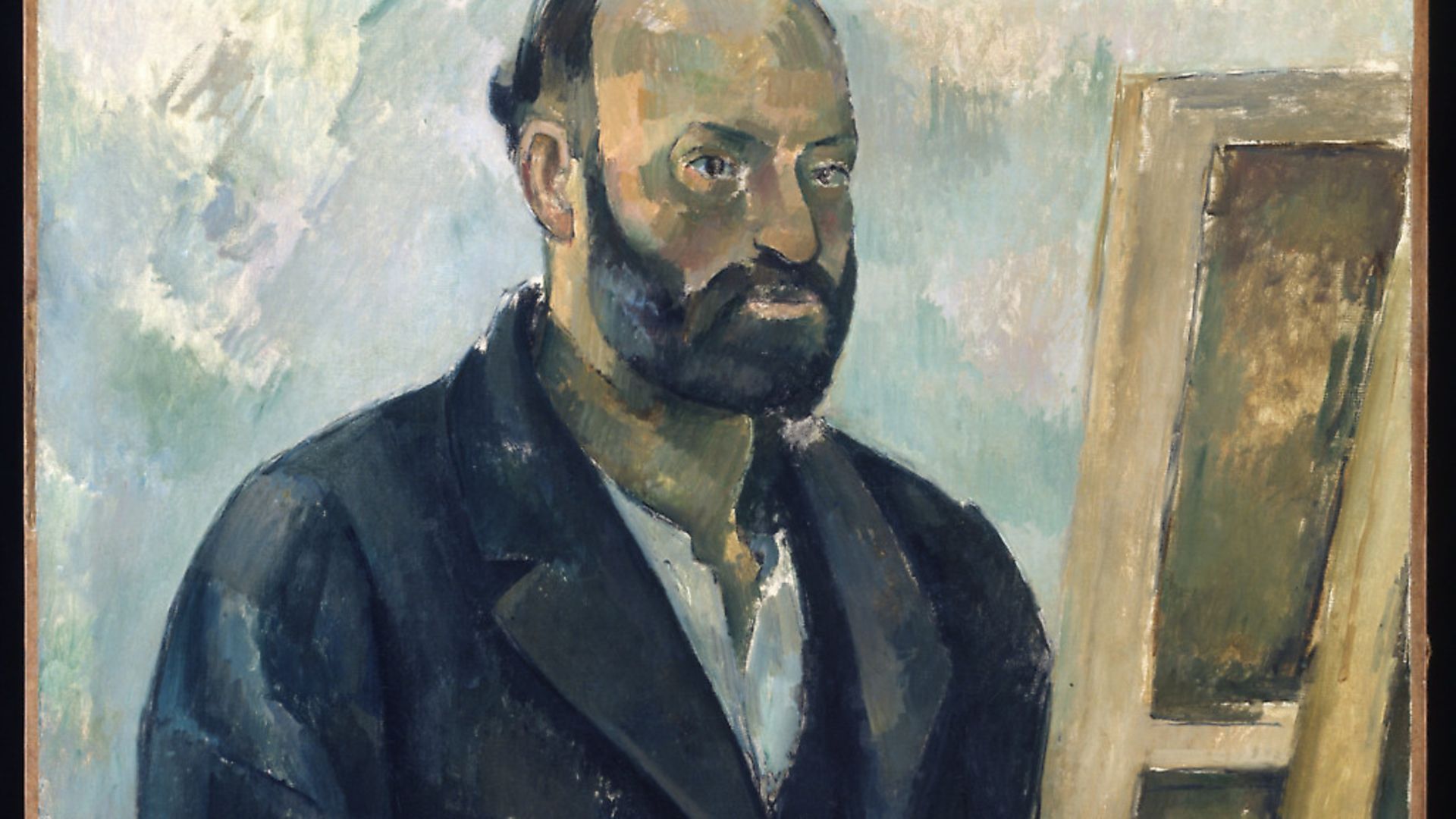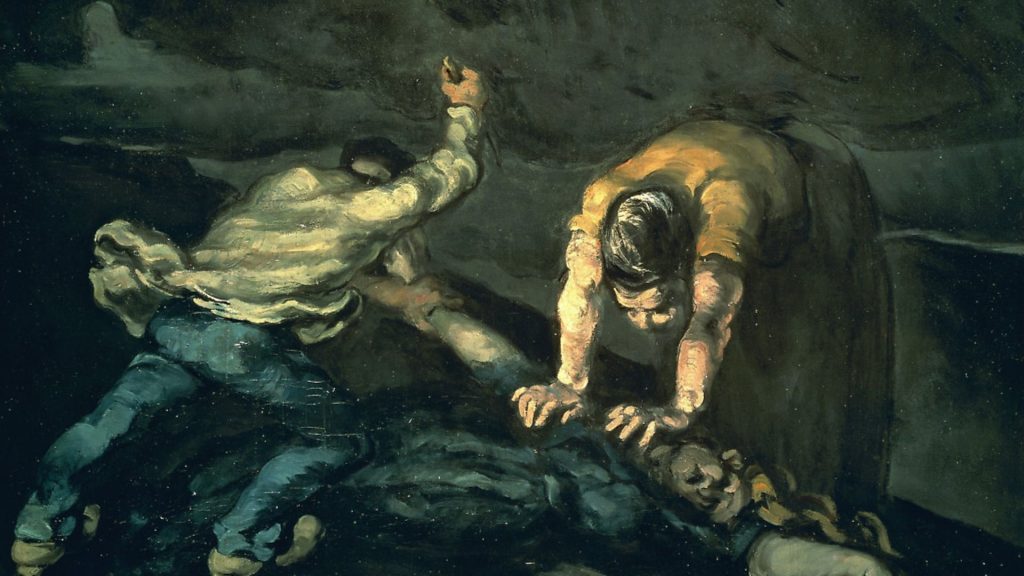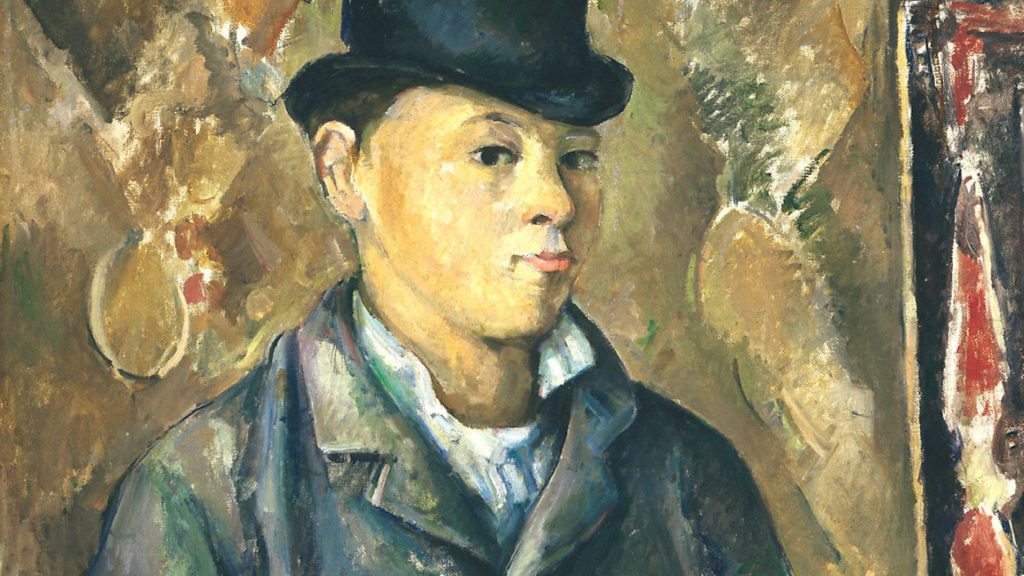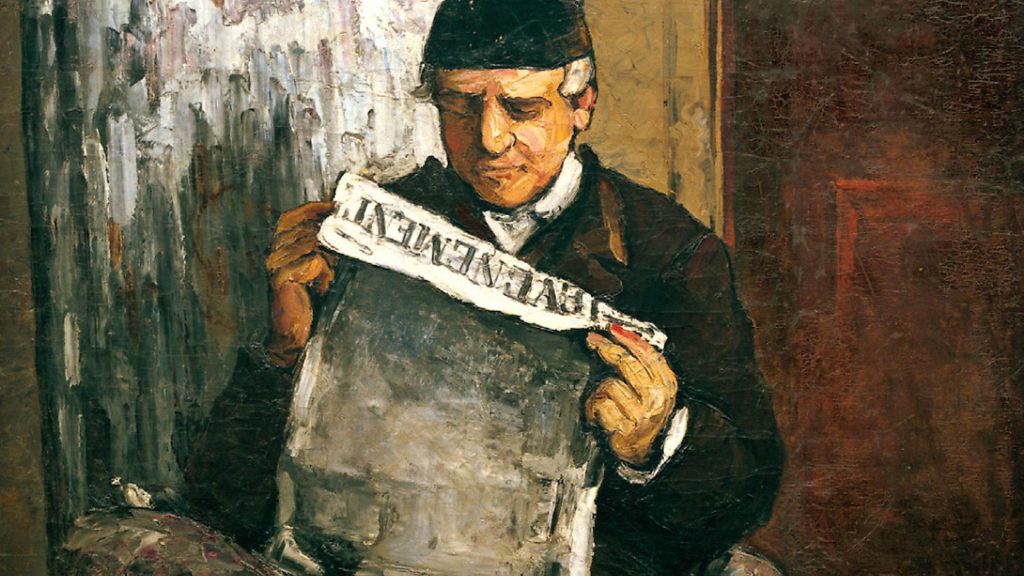
He cultivated an image as an outsider, but Cézanne’s role at the heart of the 20th century revolution in art is underlined in a new edition of his letter. FLORENCE HALLETT reports.

To Picasso, Paul Cézanne was “my one and only master”; to Picasso’s great rival, Henri Matisse, he was “the father of us all”. Following his death in 1906, Cézanne was hailed as a prophet of modernism, with countless artists claiming him as their idol.
By 1914, the art critic Clive Bell was describing Cézanne as the “Christopher Columbus of a new continent of form”, whose work had set in train innovations that dispensed, one by one, with conventions and certainties that had held since the Renaissance.
Two important books, both now available in paperback, give fresh insight into this enigmatic character: Christopher Lloyd’s survey of Cézanne’s drawings and watercolours allows us a sense of his preoccupations and artistic development. The most recent English translation of Cézanne’s letters, meanwhile, offer a different view: “On paper,” writes their translator, the late Alex Danchev, “the mask drops”.
Cézanne’s exalted status was far from assured, and in his lifetime he was met with more failure than success. The critics were the last to recognise Cézanne’s achievements, with art dealers showing only marginally greater perspicacity.

Many scratched their heads at what looked to them like rough and inexpert daubings: even Gustave Geffroy, a rare example of a sympathetic critic, could only summon the most lukewarm of compliments when he wrote in 1893 that Cézanne was “a kind of precursor of another art”.
It wasn’t until 1895 that the art dealer Ambroise Vollard staged Cézanne’s first significant solo exhibition, so marking the beginning of the artist’s gradual, if unsteady acceptance into the Paris art world. By the time of his death 11 years later, “Cézanne’s influence gradually flooded everything”, said Picasso. Even then, admiration was far from universal, with one unnamed artist reportedly describing his work as “the painting of a drunken cesspit-emptier.”
Even so, it was Cézanne’s fellow painters who were the first to see merit in his work. His association with the impressionists ended quietly in 1879, with a letter to Pissarro explaining that “it would be much better for me not to take part in the Impressionist Exhibition”.
His friendships with “the humble and colossal Pissarro” and Monet “the master of Giverny” endured, but his painting style moved in a direction of his own, away from what he perceived as the impressionists’ all-out pursuit of the fleeting effects of light.

Instead, Cézanne emphasised form, lending to a dish of apples, a chair, or a bottle filled with roses, a weight and substance that so often belies their humble nature.
He tried to see things truly afresh, aiming at a sort of optical truth unmediated by pictorial conventions or interpretation. To this end, he denied the absolute authority of linear perspective, his forms were simplified, pure colour was applied in distinct blocks. These elements would be the touchstones of 20th century modernism, and they were seized upon by a new generation of painters.
The Cézanne retrospective held in 1907 was transformative, not least for Picasso and Braque, the joint founders of cubism.
For them, Cézanne’s interest in visual perception, his reduction of forms to their geometric essentials, and his acknowledgment of the tension between the flatness of the canvas and the representation of three-dimensional space was essential to the development of cubism.
Picasso’s self-portrait painted around the time of Cézanne’s death declares his admiration for the older artist. It is a homage to Cézanne, and specifically to Cézanne’s own Self-Portrait with Palette of c.1890, in which he presents himself as assured and authoritative, and above all as a painter.
By emulating it, Picasso declares his own artistic lineage, but also his ambition. It was around this time that Picasso began his own experiments with the representation of space, form and perception, and in 1907 he painted Les Desmoiselles d’Avignon, typically regarded as the first cubist painting.
The brief but brilliant flowering of the Fauves – the ‘wild beasts’ as they were called by one appalled critic – emphasised the same characteristic elements that had been seized on by Picasso and Braque, though with very different results.
Led by Henri Matisse, they used vivid and shockingly unnatural colours, while flattened perspective and forms constructed from unmixed colours applied in blocks can be seen as a direct consequence of Cézanne’s example. By 1908, Fauvism as a distinct movement had all but dissipated, but many of its concerns endured, and Matisse remained perhaps Cézanne’s most dedicated disciple.
Matisse was rather older than Picasso, and the seeds of Fauvism were sown a decade or so earlier when he saw paintings by Cézanne, but also the work of other post-impressionist painters like Georges Seurat and Paul Gauguin.
Seurat’s divisionism (sometimes called pointillism) tried systematically to replicate the effects of light, while Gauguin used colour in a freer, more intuitive way. In fact, Gauguin was a great admirer of Cézanne, and in his Bowl of Fruit and Tankard before a Window, probably 1890, we can see him looking at a painting by Cézanne from his own collection.
Though we retain an understanding of how the space is organised, in this still life, Gauguin, like Cézanne, does this not through linear perspective, but through the arrangement of objects on the canvas.
In doing so, Gauguin makes us very aware of each individual object and its relationship to everything else in the composition. The painting makes sense for itself, not as an attempt to make an illusionistic copy of something he sees. Instead, pattern, colour and form work together to make a self-contained whole.
Cézanne was far from being a benign mentor or father figure to the artists who admired him and he was unhappy about Gauguin’s homage, which he considered to be plagiarism rather than a mark of respect.
He was a notoriously difficult character, who remained his entire life in Aix-en-Provence, the town of his birth, though he made regular trips to Paris. He lived an almost hermetic existence, ruled by strict routine and an obsessive commitment to painting, and his collected letters give a vivid sense of his character, moods and habits.
Writing to his great friend the novelist Emile Zola, to artists, dealers, doctors and his family, Cézanne is by turns morose, ebullient, witty and erudite. Business letters to collectors and other artists are interspersed with lengthy outpourings to Zola, and knowing erudition is tempered with frank confession.
Sometimes, the letters to Zola are almost manic in pitch, lurching from euphoria to despondency and taking the form of long compositions in verse form, and often accompanied by sketches.
Cézanne’s paintings were rarely seen in the capital prior to Vollard’s 1895 exhibition. Instead, news of him came from the reports of those brave enough to visit him in Provence.
The painter and critic Emile Bernard spent a month with Cézanne in 1904, and it was to Bernard that Cézanne delivered his dictum to “treat nature in terms of the cylinder, the sphere and the cone”, so adding weight to his characterisation as a proto-cubist.
Such pronouncements, whether accurate or embellished, only enhanced Cézanne’s priestlike reputation. Certainly, a great deal of the persona that was conveyed to the outside world was carefully cultivated.
Though Cézanne was highly educated, he played the part of a peasant with alacrity. Perhaps through a genuinely held feeling of affinity, as well as through curmudgeonly contrariness, he presented himself as a humble son of the soil, and he is reported to have greeted his fellow painter with the words, “I won’t offer you my hand, Monsieur Manet, I haven’t washed for a week.” In Alex Danchev’s assessment “he was deeply cultured and deliberately uncivilised”.
Some of this was no doubt borne out of, or at least exacerbated by his difficult relationship with his family, and particularly his father, whose portrait Louis-Auguste Cézanne, Father of the Artist, Reading L’Evenement, 1866, is an eloquent depiction of a remote and forbidding figure.
His father was a successful banker, and though he would eventually accept his son’s choice of career and provide him with financial support, his disapproval was always made clear.
The darker aspects to Cezanne’s character are more directly indicated in some of the earlier paintings, notably The Eternal Feminine, about 1877, in which a naked woman is surrounded by a crowd of male onlookers. Exactly what is happening in the encounter is unclear, but the crowding figures, and the red holes where the woman’s eyes should be make this a profoundly disturbing picture. Violence is nowhere more frankly depicted than in The Murder, 1867-8, in which the figure of the murderer is animated with an extraordinary, malevolent physical power that seems to encapsulate not just the moment of violence but the horror of its premeditation.
Though not all the mythmaking was done by Cézanne himself, such bizarre and unsettling paintings provided a rich seam of material for others.
In his lifetime, two writers created characters that were thinly veiled representations of Cézanne, with Marius Roux’s 1878 novel The Substance and the Shadow followed in 1886 by Zola’s L’Oeuvre.
In Roux’s novel, Cézanne is condemned to an ignominious end, while Zola’s Cézanne character, Claude Lantier, could hardly have been more unsympathetically drawn: beset by neurosis, paranoid, obsessive and sexually repressed, and with a pathological fear of women.
For artists, it was always what they saw, not what they read or heard, that had the greatest impact. Aspects of his works that were taken as formative were, to Cézanne, serious faults, occurring because of his own shortcomings rather than by design.
The flattening of space occurred because Cézanne had not resolved the tension between pictorial coherence and naturalism; areas were left unpainted because he was not satisfied with the colours he had at his disposal. For many painters, it was not what Cézanne intended that mattered, but what he did.
Even so, it seems that Cézanne’s extraordinary authority derived from more than painting alone. When Matisse spoke of a painting called Three Bathers by Cézanne, which he acquired in 1899, it was as if he were talking of another person. “It has supported me morally during the critical moments of my artistic adventure; I have drawn hope and endurance from it,” he said. At the beginning of the 20th century, Cézanne provided not just the elements of a new art, but the definition of what it meant to be an artist.
The Letters of Paul Cézanne, edited and translated by Alex Danchev, is published in paperback by Thames & Hudson, £19.95. Cézanne: Drawings and Watercolours, by Christopher Lloyd, is published in paperback by Thames & Hudson, £18.95










